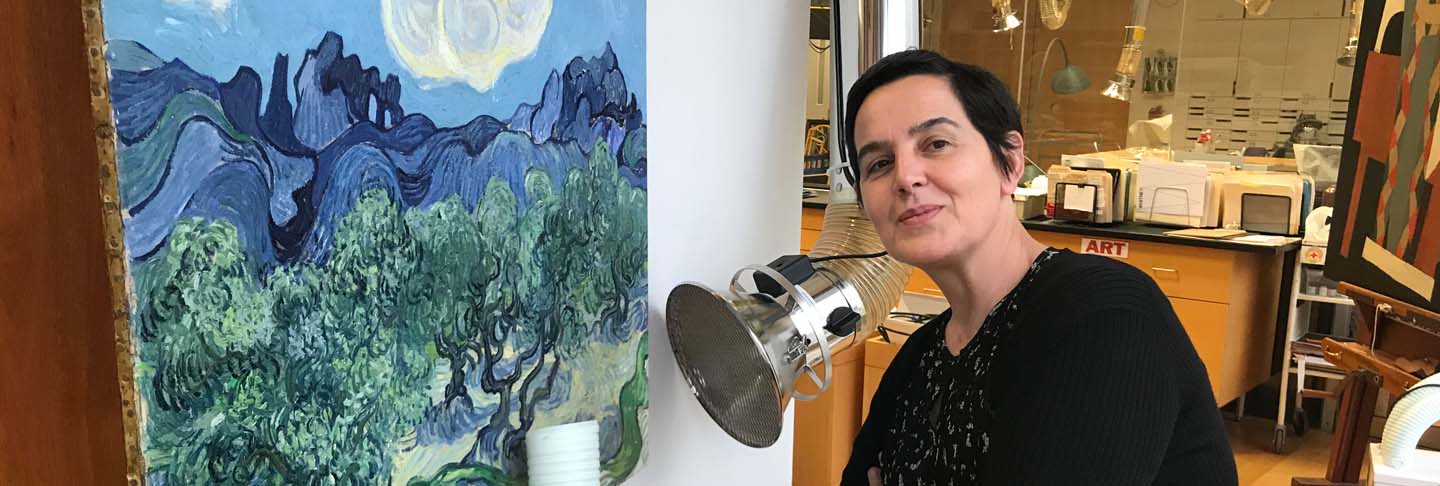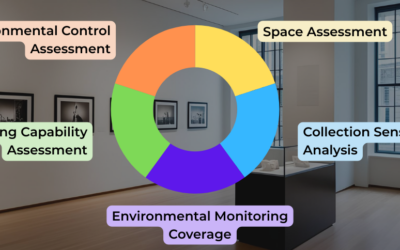The team at Conserv is growing! This week we are introducing: Ana Martins. Ana has a background in Analytical Chemistry and received her PhD from the University of Porto in Portugal in 1997. Prior to starting at Conserv, Ana was a Conservation Scientist at The Museum of Modern Art in New York (MoMA) for thirteen years. She split her time between technical art history and preventive conservation. She recently relocated to Europe where she has strong ties with the museum community. She is a member of the advisory board and will assist with our International expansion and research collaborations. (Banner photo credit: Jom Luiten)

Ana Martins
What is your role on the Conserv team?
I was invited to the advisory board in late 2020, to help set a direction for the business, strengthen relationships with the cultural heritage community, and consult on product features. I have since relocated to The Netherlands and will assist Conserv in expanding their market outside of the US while also establishing research partnerships within the EU. I have been part of the cultural heritage preservation community for the past thirteen years and I look forward to sharing my enthusiasm for Conserv with my European colleagues and showcase what they have already been able to create.
What is your experience with collections?
Until a month ago I was working as a Conservation Scientist at The Museum of Modern Art (MoMA) in New York. Part of my time was dedicated to technical art history and the study of processes and materials used in modern art and design objects. The rest of the time, I was involved in the museum’s collection care, from the monitoring and reporting of environmental conditions and light exposure in galleries and storage facilities to advising on safe conditions and materials for the display and traveling of museum objects and loans, and more recently in the museum’s sustainability task force. Through my work in preventive conservation, I became aware of the importance of gathering and relaying meaningful data, but also of the truly collaborative nature of collection care. All institutional departments have a role to play and must be involved in the objects’ preservation, from the discussion and adoption of museum guidelines to the exhibition’s design and production, or to the lighting or lending policies. But it is also important to support these discussions with scientific data and tools trusted and shared by all. And “by all” I mean not only within the institution, but by the community at large, and that’s where I see Conserv play a major role in the future.
What excites you about Conserv?
It was immediately clear to me that Conserv’s vision for environmental monitoring had enormous potential and could greatly benefit cultural institutions, small and large. I was at MoMA when I met the co-founders Austin and Nathan in the early days of Conserv, and we had just interfaced our BMS system to a bespoke monitoring and reporting platform for conservation. It was an endeavor that only a few institutions have the means to carry out, and I really wished Conserv had been available then. The platform they have developed since already surpasses any environmental monitoring solution out there for museums and collections, and being such a niche market is a strong incentive for Conserv to keep improving and tailoring their sensors and platform.
As a scientist, I am particularly excited about Conserv’s potential for contributing to the ongoing research in preventive conservation. Museum guidelines for climate control, lighting, pest management have been published, revised, and extensively discussed, but a more global and data-driven evaluation of these guidelines is long overdue. The sustainability of current collection care practices, the impact of climate change on buildings operations and collections, and the development of damage functions for objects are all pressing issues. These could all be investigated by existing research frameworks and by using data mining tools if sufficient data was amassed and shared by the community. The Conserv sensors and platform could easily facilitate this research by giving institutions the necessary tools to collect and share relevant data.
Where do you see the company going in the future?
I think the cultural heritage field has suffered from the lack of fully customized and supported live environmental monitoring tools for far too long, especially the smaller institutions that do not have fully dedicated personnel and specially designed facilities. Conserv will continue to take in and build upon the existing knowledge and research to add new features to its platform and sensors; that is certainly very exciting and the team already has a long and ambitious list of projects for the coming years. But what I really hope to see happening very soon is Conserv sensors become ubiquitous and to see them deployed in all the museums, galleries, historical houses, and libraries I hope to visit once we can all safely travel again.




